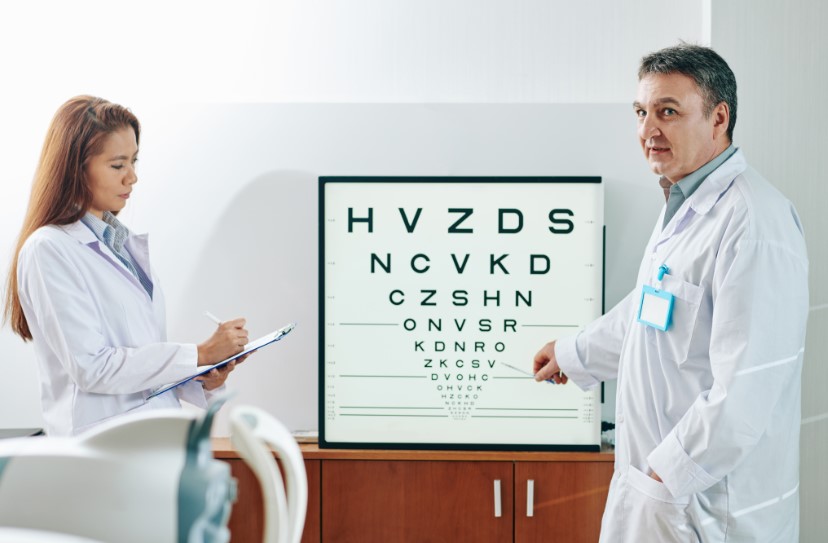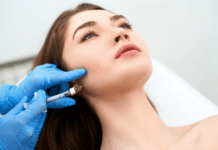Eye Examination
An ophthalmologist (eye doctor) uses a series of tests to determine whether your eyes are healthy and diagnose eye diseases during an eye examination.
Eye conditions often do not cause symptoms in their early stages.
Having your eyes examined at the recommended intervals can help your eye doctor identify problems early when they are most treatable.
How Often Should I Have An Eye Examination
The American Academy of Ophthalmology confirms the following age-based schedule for eye examinations:
- Children ages five and under should be evaluated by their pediatrician for common vision problems, such as lazy eyes or crossed eyes. Those with a family history of conditions as childhood cataracts or glaucoma should see an ophthalmologist for an exam as soon as possible.
- School-aged kids should get an eye exam every one to two years. Children with vision problems will need to be examined more often.
- Adults with no symptoms or history of vision problems should get a baseline comprehensive eye exam at age 40.
- Adults ages 40 to 54 should see an ophthalmologist for an eye exam every two to four years.
- Adults ages 55 to 64 without any eye problems or risk factors should see an ophthalmologist for an exam every one to three years.
- Adults ages 65 and older should see an ophthalmologist for an eye exam every one to two years.
- Adults of all ages with chronic illnesses that put their eyes at risks, such as diabetes or high blood pressure, or have a family history of eye diseases, should see a doctor more frequently. People who wear glasses or contact lenses will also need exams more often to check whether their vision has changed and if they need new lenses.
WHO PERFORMS AN EYE EXAMINATION?
Most commonly, an ophthalmologist performs an eye examination. Ophthalmologists are medical doctors who can diagnose and treat eye diseases, prescribe glasses and contact lenses, and perform surgery when necessary.
Optometrists are medical professionals who can also do an eye exam and diagnose and treat many vision conditions. However, an optometrist cannot diagnose more complex eye diseases or perform surgery.
WHAT TO EXPECT DURING THE EXAM
The doctor will start by asking about your personal and family medical history, including any medications you are taking and whether you are having any problems with your vision. The doctor will also ask if you wear glasses or contact lenses and check your prescription.
You may get drops in your eyes to numb them so your doctor can examine them without you feeling any discomfort. The pupils of your eyes may also be dilated (widened). Dilating the pupils lets in more light so that the ophthalmologist can examine them.
The ophthalmologist will use one or more of the following tests to examine your eyes.
Visual acuity test: This test helps your doctor determine how you can see, both close-up and at a distance.
You will read letters printed on a chart hanging on the wall or placed in front of you while one eye is covered. The letters get smaller with each subsequent line.
The results are reported as a fraction. The top number is the standard distance of the chart—20 feet away. Normal vision is 20/20.
Ocular motility: The doctor will check your eye movement as you track an object. This test is done to ensure that your eye muscles work well and that your eyes are in the correct alignment as they move back and forth and up and down.
Refraction assessment: You will look through a series of lenses in a mask-like device called a phoropter and tell your doctor which ones look clearest. This test helps evaluate how well your eyes focus and what power lens you will need to see clearly if you have a refractive error such as nearsightedness or farsightedness. Your doctor will use this test to fine-tune your eyeglass or contact lens prescription.
Retinal examination: During this test, your ophthalmologist uses an ophthalmoscope tool to shine a light into your eye. This tool allows your doctor to examine the retina, optic nerve, and other structures in the back of your eyes. It is done after your eyes are dilated.
Visual field tests: These tests evaluate your peripheral vision—how well you can see out of the sides of your eyes without turning your head.
Peripheral vision loss may be a sign of glaucoma, a disease that damages the optic nerve and can lead to blindness.
Your doctor might cover one of your eyes and move an object into the other eye’s view until you can see it.
Or you may look at a screen and press a button every time you see a light blink in your peripheral vision.
Slit-lamp examination: Your doctor will use a magnifying microscope with a bright light to examine the inside and outside of your eyes. The doctor may place a dye in your eye to show whether any cells in the front of your eye are damaged.
Tonometry: This test measures the intraocular pressure, the pressure inside your eye, to diagnose glaucoma. To measure the pressure, the doctor will either use a tonometer device that presses gently against your eye or a puff of air. Your eye will be numbed first, so you will not feel any discomfort.
Depending on your family history or symptoms, your ophthalmologist might recommend other tests as well.
For example, the doctor might take special images of your eye to look for problems with your retina. The entire eye examination should take between 30 and 45 minutes.
AFTER YOUR EXAM
Your ophthalmologist will inform you if he or she detects any problems with your vision. Common conditions an eye examination can diagnose include:
- nearsightedness—difficulty seeing objects at a distance
- farsightedness—difficulty seeing things close up
- astigmatism—an irregularly shaped cornea, which causes blurred vision
- color blindness
- cataracts
- glaucoma
- age-related macular degeneration
- diabetic retinopathy (a complication of diabetes)
Your ophthalmologist will tell you the following steps if you have one of these conditions. The doctor will also give you a prescription for glasses or contact lenses if you need vision correction.
Walmart Eye Examination Cost
A comprehensive eye health and vision exam are $79. A basic contact lens exam is $129.
If you have astigmatism or need bifocal correction and want to wear contact lenses, there is a modest additional cost.
Resources
Websites
“Comprehensive Eye and Vision Examination.” American Optometric Association. https://www.aoa.org/patients-and-public/caring-for-your-vision/comprehensive-eye-and-vision-examination (accessed December 16, 2018).
“Eye exam.” Mayo Clinic. March 21, 2018. https://www.mayoclinic.org/tests-procedures/eye-exam/about/pac-20384655 (accessed December 16, 2018).
“Eye Examinations: What to Expect.” Cleveland Clinic. March 10, 2015. https://my.clevelandclinic.org/health/diagnostics/10738-eye-examinations-what-to-expect (accessed January 18, 2019).
Turbert, David. “Eye Exam and Vision Testing Basics.” American Academy of Ophthalmology. December 17, 2018. https://www.aao.org/eye-health/tips-prevention/eye-exams-101 (accessed January 18, 2019).









